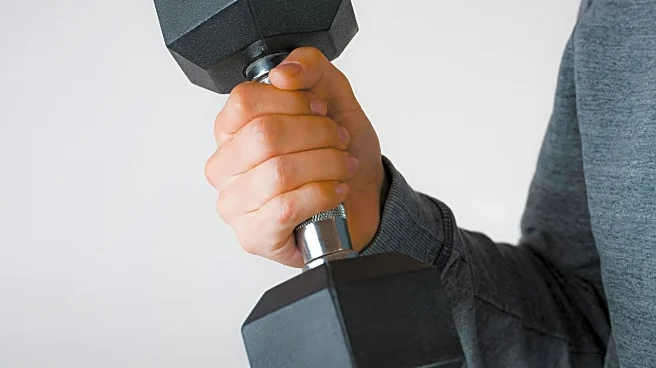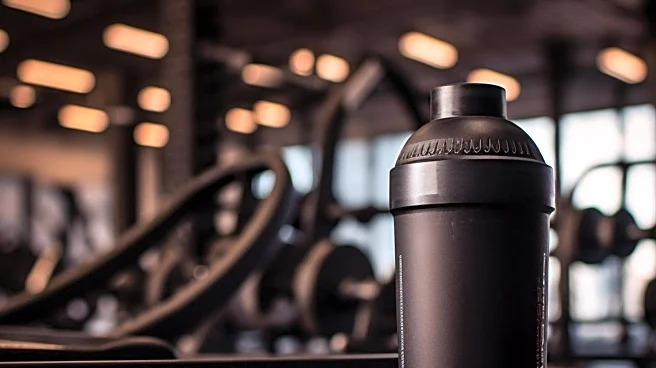What's Happening?
Kevin Koester, a 58-year-old CrossFit Masters athlete, is demonstrating that age is no barrier to fitness. Koester maintains a high level of athleticism through a comprehensive routine that emphasizes
mobility, strength, recovery, and nutrition. His regimen includes CrossFit training, sprint sessions, and outdoor activities such as trail running, swimming, snowboarding, and hiking. Koester prioritizes movement quality over lifting heavy weights to avoid injuries and sustain his fitness into his 60s. Recovery is a key component of his routine, involving daily cold-water immersion, meditation, and adequate sleep. His diet consists of whole foods, high in protein, and he avoids excessive sugar intake. Koester's approach is focused on becoming the best version of himself as he ages, allowing him to continue enjoying the activities he loves.
Why It's Important?
Koester's fitness strategy is significant as it challenges the conventional notion that aging necessarily leads to physical decline. His approach underscores the importance of mobility, recovery, and nutrition in maintaining long-term health and fitness. By focusing on movement quality and injury prevention, Koester sets an example for older adults seeking to remain active and healthy. His routine highlights the potential for individuals to sustain high levels of physical activity and enjoyment in their later years, which can contribute to improved quality of life and longevity. This perspective is increasingly relevant as the population ages and more people seek ways to maintain their health and vitality.
What's Next?
Koester's approach to fitness may inspire others to adopt similar routines that prioritize mobility, recovery, and nutrition. As more people recognize the benefits of such a regimen, there could be a shift in how fitness is approached by older adults, with an emphasis on sustainable practices that support long-term health. Fitness communities and trainers might increasingly focus on programs tailored to older adults, promoting activities that enhance mobility and prevent injuries. Koester's success could lead to broader discussions on the importance of maintaining physical activity throughout life, encouraging more individuals to pursue fitness goals regardless of age.
Beyond the Headlines
Koester's story highlights the cultural shift towards valuing fitness and health at all ages. It challenges stereotypes about aging and physical capability, promoting a more inclusive view of fitness. His routine also raises ethical considerations about the accessibility of fitness resources and the importance of promoting health equity. As society continues to grapple with issues related to aging populations, Koester's example may influence public policy and health initiatives aimed at supporting active lifestyles for older adults.











